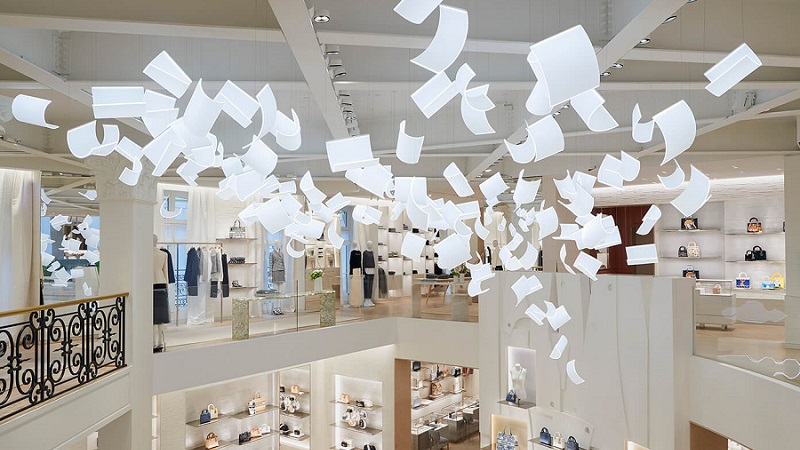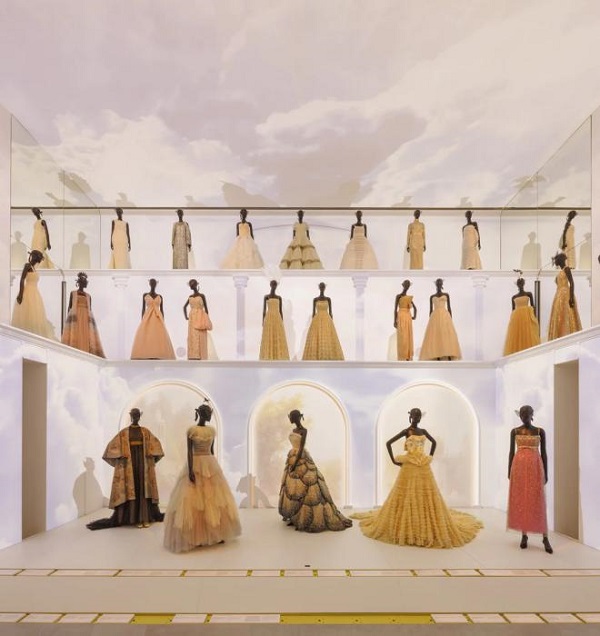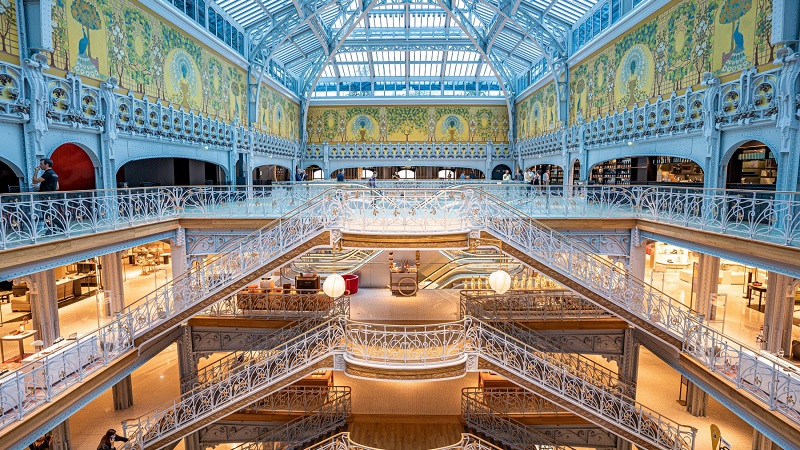Dior Reopens Historic Montaigne Flagship In Paris
Written by ABR on 17/03/2022
LVMH brand sales have boomed during the pandemic, but will the wisdom of its all-encompassing strategy for in-person experiences still be a tade too bold to bet on consumer behavior and brand loyalty?
Beyond fashion, there are the realms of culture, art, and hospitality still yet untouched. After a two-year renovation, Dior is reopening its historic 30 Montaigne flagship in Paris. As luxury brands attempt to widen their scope betting big on a fully immersive brand experience, here is one of Dior’s most historic projects featuring a museum, restaurant, hotel suite, and salon.
Christian Dior founded his mansion in 1946 at 30 Avenue Montaigne. Of what used to be a stately Parisian hotel, it eventually became the French label’s top-selling flagship. In 2019, it closes for a huge renovation, a LVMH-backed project that saw the acquisition of six more historic buildings that will soon be a wholly Dior universe – an emporium – covering a total 108,000-square-foot space.
Peter Marino, the New York-based interior architect who knows a thing or two about taste, is also a favorite among luxury retailers. He used more than 100 materials from cerused oaks and white stucco textures to custom-embroidered silks. Suspended in an airy atrium near the entrance is a luminous sculpture by Paul Cocksedge that mimics Christian Dior’s sketches falling from his desk. Isa Genzken’s 26-feet rose sculpture adorns the heart of the boutique.

The reinvention, referred to as the “iconic realm of dreams”, also houses a gallery space, three curated, as well as a high-end jewelry area where patrons can design their own pieces.
There’s even a standalone hotel room; a service that allows guests to keep the store open all night for exclusive 24/7 access. “We wanted to build a kind of Luna Park of the senses,” Pietro Beccari, CEO of Dior, tells Business of Fashion. “Someone coming here, if they loved Dior they will love it even more. If they didn’t, they’ll be convinced about the value of this brand.”

At the adjoining museum, Yves Saint Laurent and John Galliano recite the label’s 75-year-old history that put Parisian elegance and French haute couture on the world map, while the on-site restaurant is headed by French culinary star Jean Imbert.
Is this a key strategy for a brick-and-mortar business like Dior? As LVMH continues to make ambitious forays into experiential retail, they believe it to be another step to circumvent an evolving retail landscape that’s increasingly pivoting towards e-commerce.
Additionally, it is also focused on expanding its luxury travel portfolio; from the expansion of Bulgari-branded properties to Fendi’s pop-up cafes to the acquisition of high-end hotel group Belmond.
Recently, the conglomerate also financed the refurbishment of storied Parisian department store La Samaritaine. Offering 5-star accommodations at the Cheval Blanc hotel (also designed by Marino), La Samaritaine is an all-in-one shopping destination that stocks such luxury brands as Fendi, Balenciaga, and Givenchy.

The success of La Samaritaine remains to be seen. Still, HSBC estimates that Dior’s revenue has tripled from $2.4 billion to $7.2 billion since Beccari took the reins in early 2018.
Do people want all LVMH all the time? We’re about to find out.
Read more about Dior’s legendary address in Paris, here.
Discover the interiors of 30 Montaigne at Dior’s virtual tour, here.
The post Dior Reopens Historic Montaigne Flagship In Paris appeared first on Music Press Asia.



 ABR Group
ABR Group